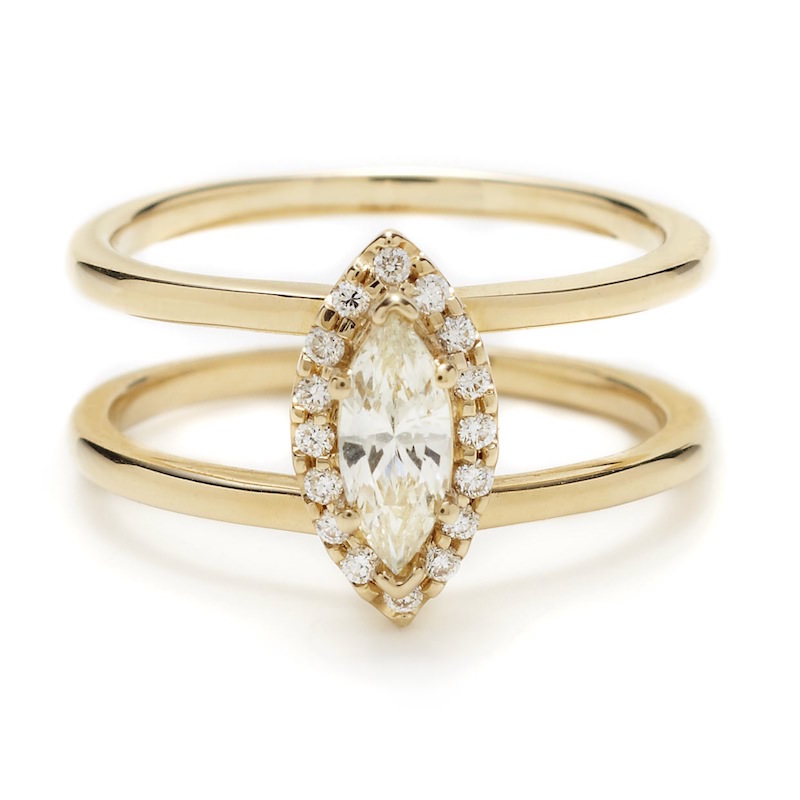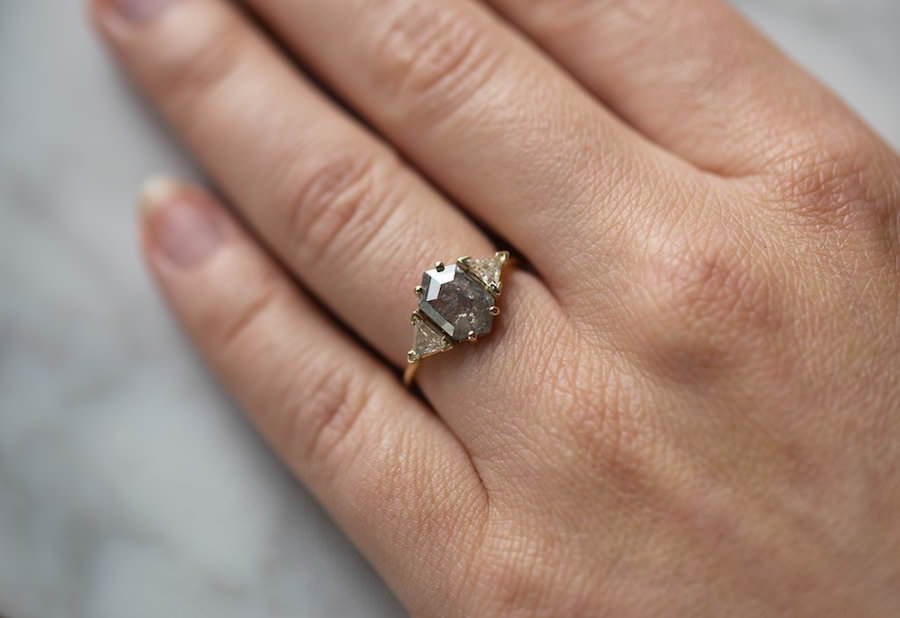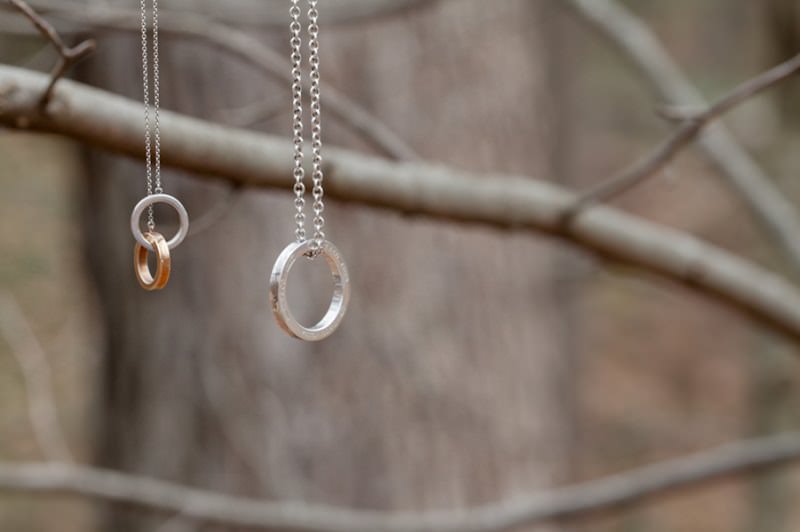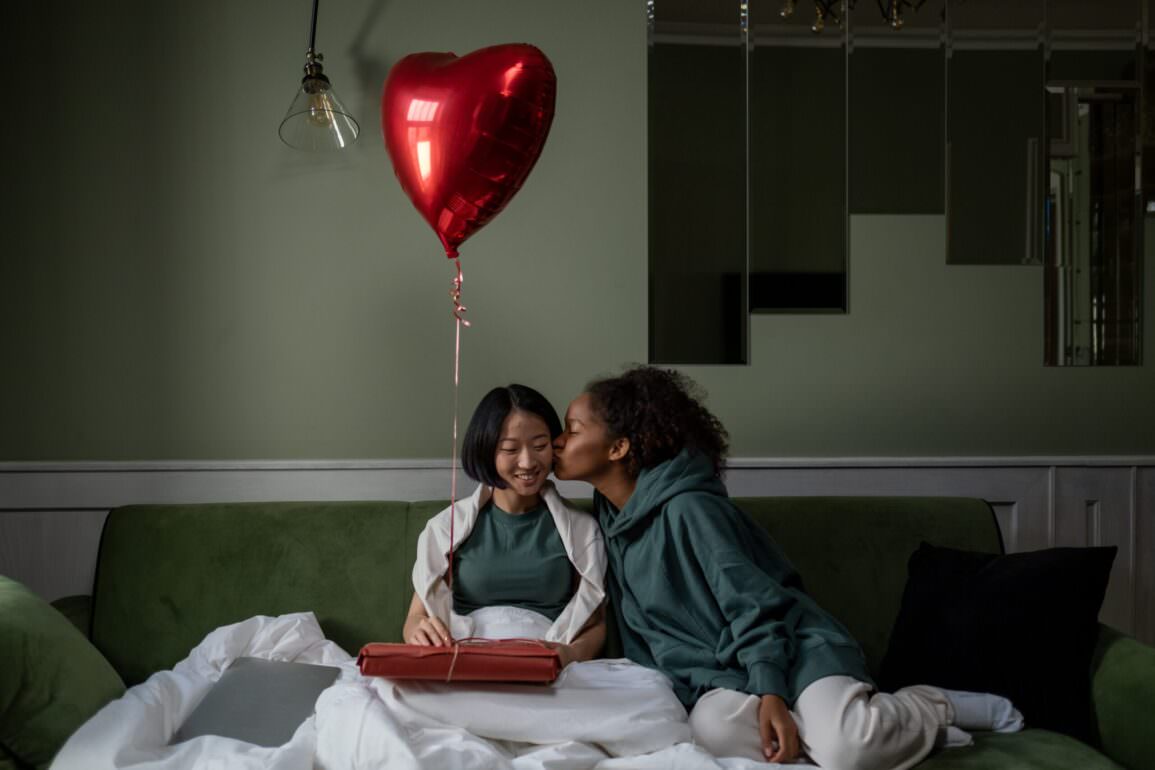If you're planning to take a trip to your neighborhood jeweler in the near future, you'll want to become relatively well-versed in the variety of cuts and settings that you'll have to choose from. Not sure of the difference between a marquise and a asscher? Does bezel sound like a foreign word to you? We asked Jennifer Gandia, co-owner of the downtown New York City jewelry boutique Greenwich Jewelers, to translate as well as share her expertise for each option.
CUTS
Left to right: Asscher Cut, Emerald Cut, Princess Cut
EMERALD CUT: The emerald cut diamond has a timeless regal look and helps elongate the finger. Pictured: Megan Thorne “Picture Frame” in 18K gold
ASSHER CUT: “The asscher was created in 1902 as a way to create an emerald with more brilliance and it works wonderfully with vintage-inspired settings,” says Jennifer. Pictured: Beverley K asscher cut engagement ring
PRINCESS CUT: “Quite literally the ‘edgy' sister of the round brilliant, the princess features the same fiery sparkle and displays geometric shapes and clean lines,” says Gandia. “A person who wants a princess cut typically knows this preference right away.” Pictured: Sylvie Bridal Collection .50-carat princess cut diamond engagement ring
Left to right: Marquise cut, Round cut
MARQUISE CUT: More rare than the other brilliant cuts, marquise-shaped gems are perfect for the client who wants a one-of-a-kind look. Pictured: Anna Sheffield marquise diamond engagement ring
ROUND CUT: The round brilliant is the most classic and desired cut. Pictured: Danhov round brilliant diamond engagement ring in 18K white gold
Left to right: Cushion Cut, Pear Cut, Oval Cut
CUSHION CUT: Cushion cuts are particularly popular in color diamonds, as it is the optimal way to bring out their intense hues. Pictured: Schachter & Co. “Bouquet” yellow diamond engagement ring
PEAR CUT: “Pear-shaped diamonds have a regal presence and can look great in a variety of settings,” notes Jennifer. Pictured: Sylvia Collection pear-shaped ring
OVAL CUT: The oval is a very traditional cut that is becoming popular once again. “Though typically set vertically, rings with horizontal ovals present a fresh way to wear this cut,” says Jennifer. Pictured: Sylvie Bridal Collection oval-shaped engagement ring in 18K rose gold
SETTINGS
Left to right: Bezel Setting, Half-Bezel Setting, Prong Setting
BEZEL SETTING: Bezel-set has a lower profile, perfect for those who desire a simpler look. “It also protects the gemstone since it's surrounded by metal, making it ideal for softer stones, like emerald or tanzanite,” says Gandia. Pictured: Danhov sapphire in 14K white gold
HALF-BEZEL SETTING: A contemporary take on the bezel, this design frames and displays the natural gem, which can help make it stand out more. Pictured: Sholdt half-bezel engagement ring in 18K white gold
PRONG SETTING: Prong settings are the most common, as they can be used with all diamond cuts. Pictured: Greenwich Ceremony Collection one-carat diamond ring in 14K white gold
**This feature originally appeared in Love Inc.'s V2 issue













You must be logged in to post a comment.